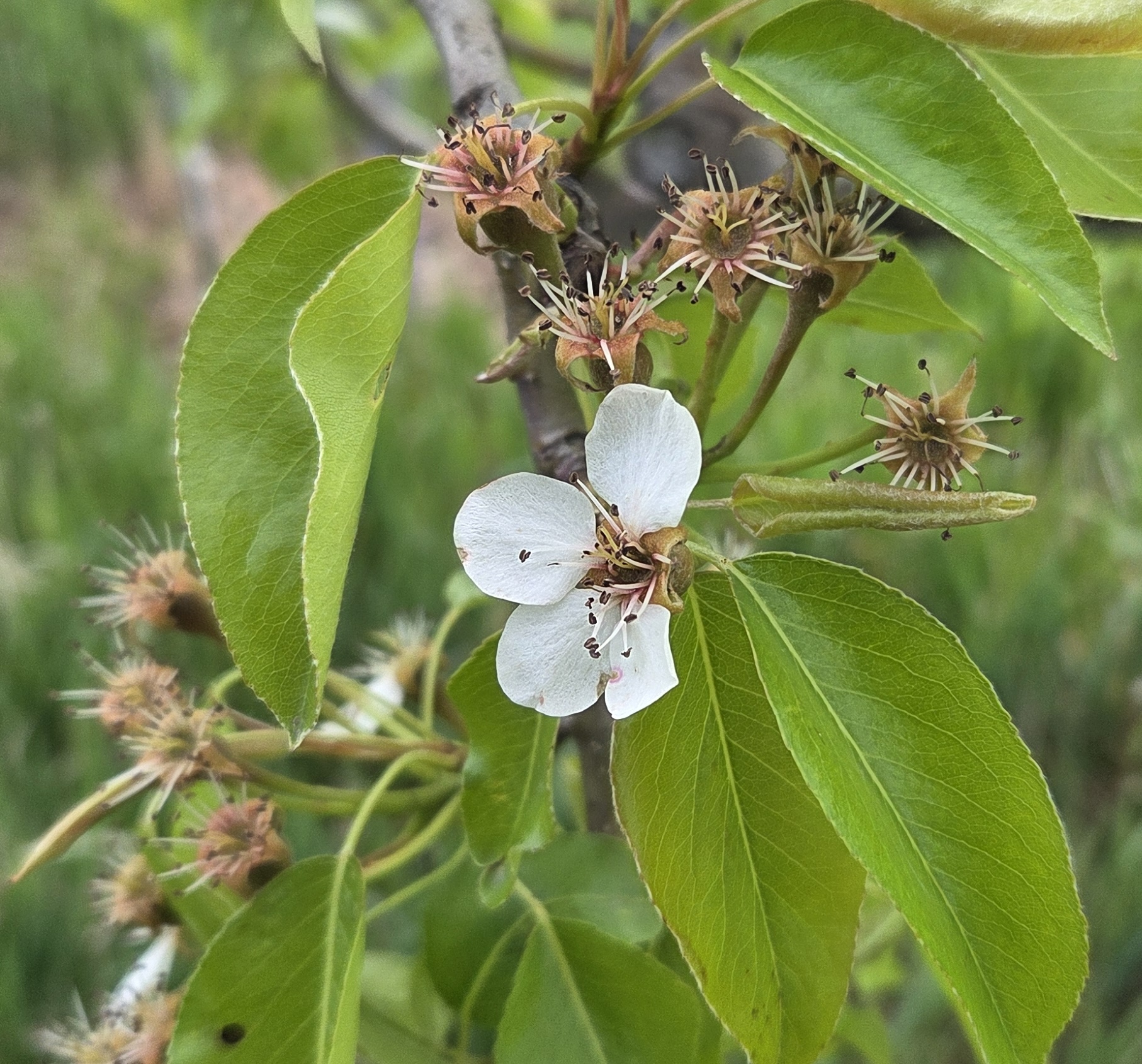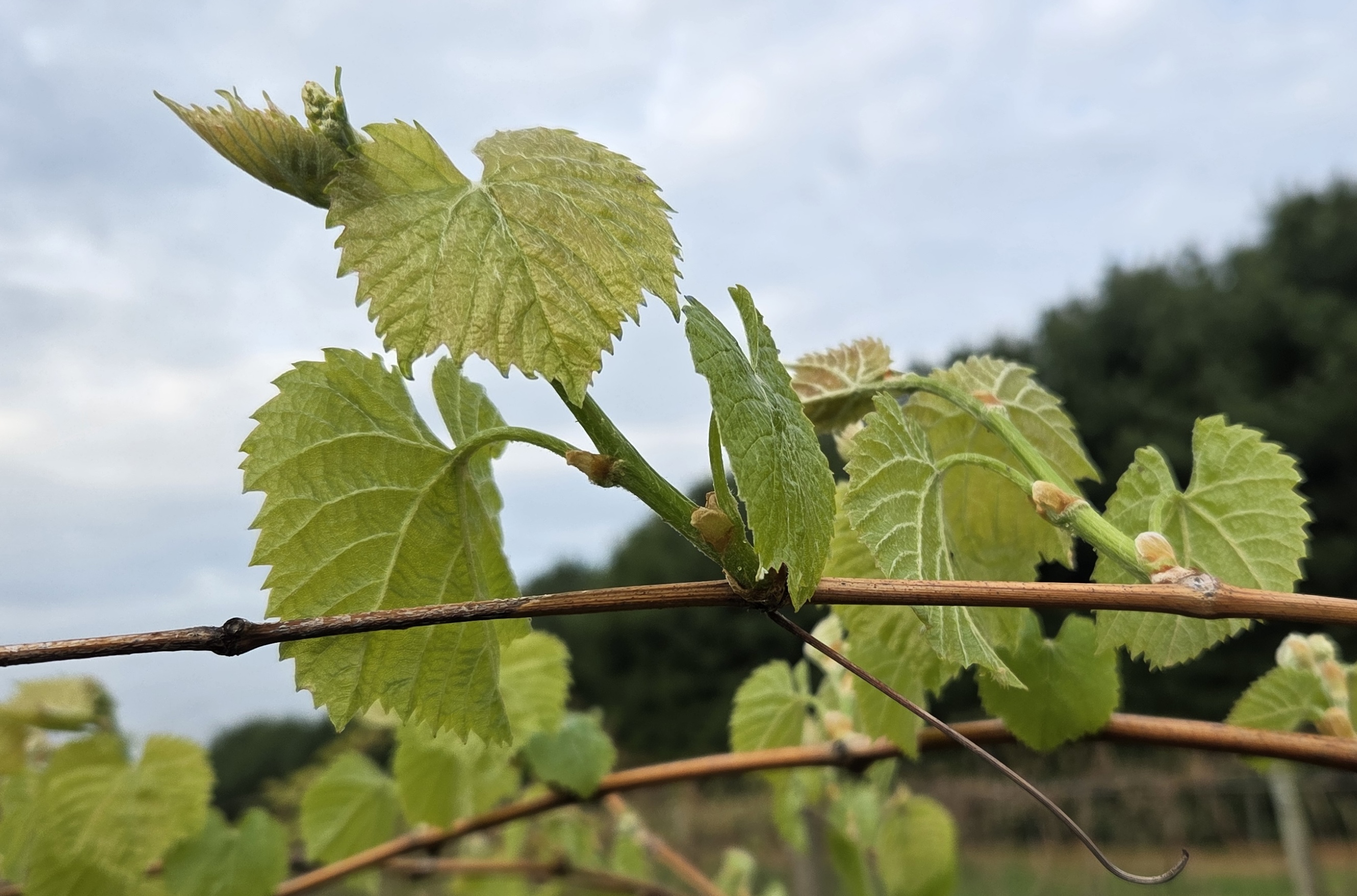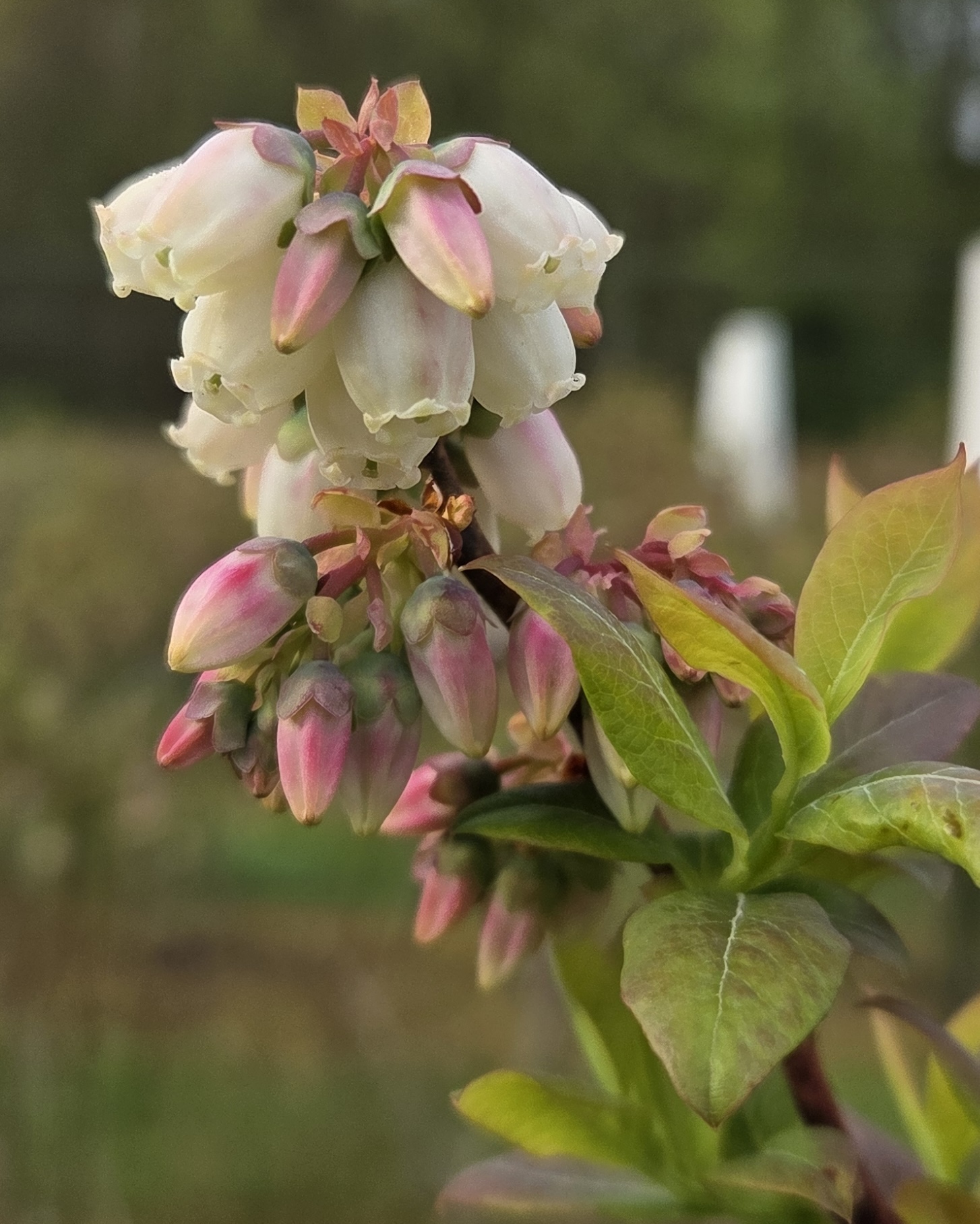Southwest Michigan fruit update – May 6, 2025
Many fruits are blooming. Pollination season is here.

MSU fruit updates
Michigan State University Extension is in the process of filling the tree fruit specialist position based at the Southwest Michigan Research and Extension Center. Because of this, there will be a more abbreviated tree fruit section in our weekly updates until the position is filled.
We are also moving our weekly integrated pest management (IPM) updates to a virtual format and dividing them into tree fruit-specific meetings and small fruit-specific meetings. The small fruit weekly updates are held Tuesday evenings. Tree fruit weekly updates are held Wednesday afternoons. We are hoping to return to joint small and tree fruit updates next year. Thank you for your understanding and happy spring!
Weather
Last week started warm and windy, with high temperatures in the 70s. A slow moving rain system entered the region on Friday, May 2, bringing some cooler, cloudy weather. Many locations saw highs in 50s through the weekend. The system stayed south of Michigan for much of the weekend, but did bring some rain on Sunday and into the start of the week. The rain system has been slow to leave; eastern portions of the southwest Michigan region is still seeing rain today (May 6).
The rain system should be gone by tomorrow. The rest of the week should be dry. Cooler temperatures on Thursday and Friday will bring a chance of localized frost in some locations but will give way to warmer weather by the weekend. Forecasts for next week are pointing to highs in the 80s and lows near 60 degrees. Medium term outlooks for the rest of the month point to warmer and drier than normal weather.
Tree fruit
Oriental fruit moth catch continues to increase at the Michigan State University (MSU) trapline near Fennville, Michigan. Biofix was last week. Redbanded leafroller and plum curculio continue to be caught at the same levels as last week.
Apricots are emerging from the shuck. At this time, they become vulnerable to plum curculio and tarnished plant bug.
Cherries are at full bloom to late bloom, depending on location.
Plums are at petal fall or in the shuck, depending on variety and location. Control of black knot begins at petal fall. Fungicides in combination with pruning out the knots is important for this disease.
Peach and nectarine bloom is complete.
Apples are at early side bloom to petal fall, depending on variety. The fire blight model on MSU Enviroweather is indicating possible infection chances over the last week at the Southwest Michigan Research and Extension Center. The next week should be dry but be prepared in case rain does occur. Scab sprays may be needed to protect the green tissue as it continues to emerge. Protectants are preferred over systemic fungicides at this time of year for scab control.
Pear is at petal fall. As with apples, scab sprays are needed as green tissue emerges if we see any precipitation over the next week.

Small fruit
Grapes are moving. The juice grapes and early hybrids have 1-3 inches of growth. Some slower hybrids and early vinifera are showing first leaf. With the warm weather over the next week, many varieties will have green tissue soon. For late bud break varieties, we have seen minor damage from climbing cutworm and flea beetle. A final dormant spray may be warranted for these varieties if you have history of these pests and green tissue is not yet visible.
Some growers are putting on the first spray for phomopsis in early varieties this week. For growers looking to delay bud break, some research indicates oils such as Amigo sprayed on dormant buds can delay bud break for a few days, but delayed pruning seems to have more consistent results. Grapes break bud near the upper portions of the canes first. By waiting until frosts are finished before final pruning, the early buds that will be pruned off anyway will get damaged. Once those canes are removed, the retained buds will open later.

Blueberry bloom has begun. Bluecrop is blooming in Berrien County. Other varieties and locations are in early bloom or late pink bud stage. Blueberry tip midge was caught in traps at the Southwest Michigan Research and Extension Center.
The need for pollination is here. Check out this Blueberry Pollinator Stewardship Guide to help keep up your hive health. With pollination approaching so quickly, it’s important to touch base with your beekeepers. Next week is looking great for pollination with weather in the 80s.
With summer coming, make sure your irrigation system is not just working but also working correctly. Join Michigan State University Extension’s blueberry and irrigation teams at the first ever Blueberry Irrigation Workshop on May 16 at the Trevor Nichols Research Center.

Strawberry flower trusses have begun to emerge. Some locations are reporting bloom. Light damage from freeze events a couple weeks ago can be seen on the first flowers, but later flowers are in great shape.
Irrigation for frost can make it so that fungicides have a hard time sticking. If sprays are needed, use systemic options and treat early in the morning for the most time for the plant to absorb the fungicide before the next watering. With bloom and bee activity, do not use insecticides. Cool, wet conditions can favor angular leaf spot, a bacterial disease. The only effective bacterial controls are copper formulations. Growers are looking at early season herbicides to control overwintering weeds and have begun spreading straw. When selecting an herbicide, check the preharvest interval.
Bramble leaves continue to emerge in many varieties. In summer bearing raspberries, last year’s primocanes should be headed (cut back) to the desired height and any remaining floricanes from last year should be removed. Fall bearing raspberry mowing should be complete. Some locations have 6-plus inches of new growth.
Surveys
Please fill out this survey from our colleagues across the Midwest about novel weed sprays!
Upcoming meetings
This year, in lieu of our historical Monday Night Fruit IPM Meetings, we will instead be hosting Tuesday night small fruit IPM meetings. They will take place entirely online at 5:30 p.m. starting April 1 and will occur weekly until June 24. Sign up here for the small fruit meetings.
The tree fruit IPM lunch meetings begin April 16. Sign up here for the tree fruit meetings.
Want to learn more about Bulletins Live Two? Join Jackie Perkins and Cheyenne Sloan on May 22 at one of two webinars to learn more. For more information and the link to sign up, check out this article.
This work is supported by the Crop Protection and Pest Management Program [grant no 2024-70006-43569] from the USDA National Institute of Food and Agriculture. Any opinions, findings, conclusions, or recommendations expressed in this publication are those of the author(s) and do not necessarily reflect the view of the U.S. Department of Agriculture.



 Print
Print Email
Email




